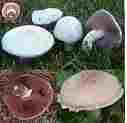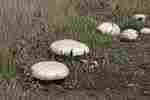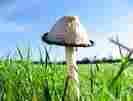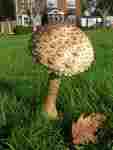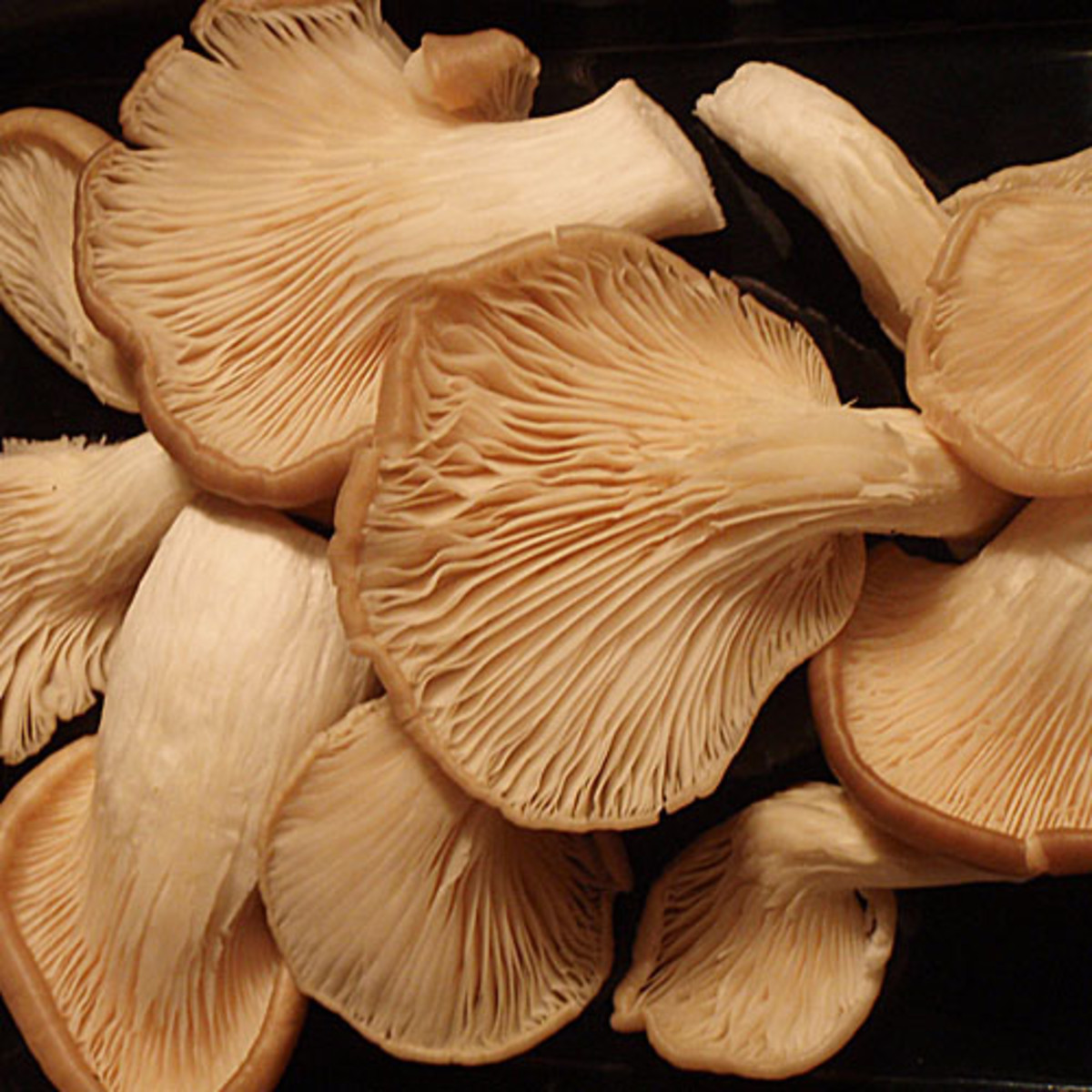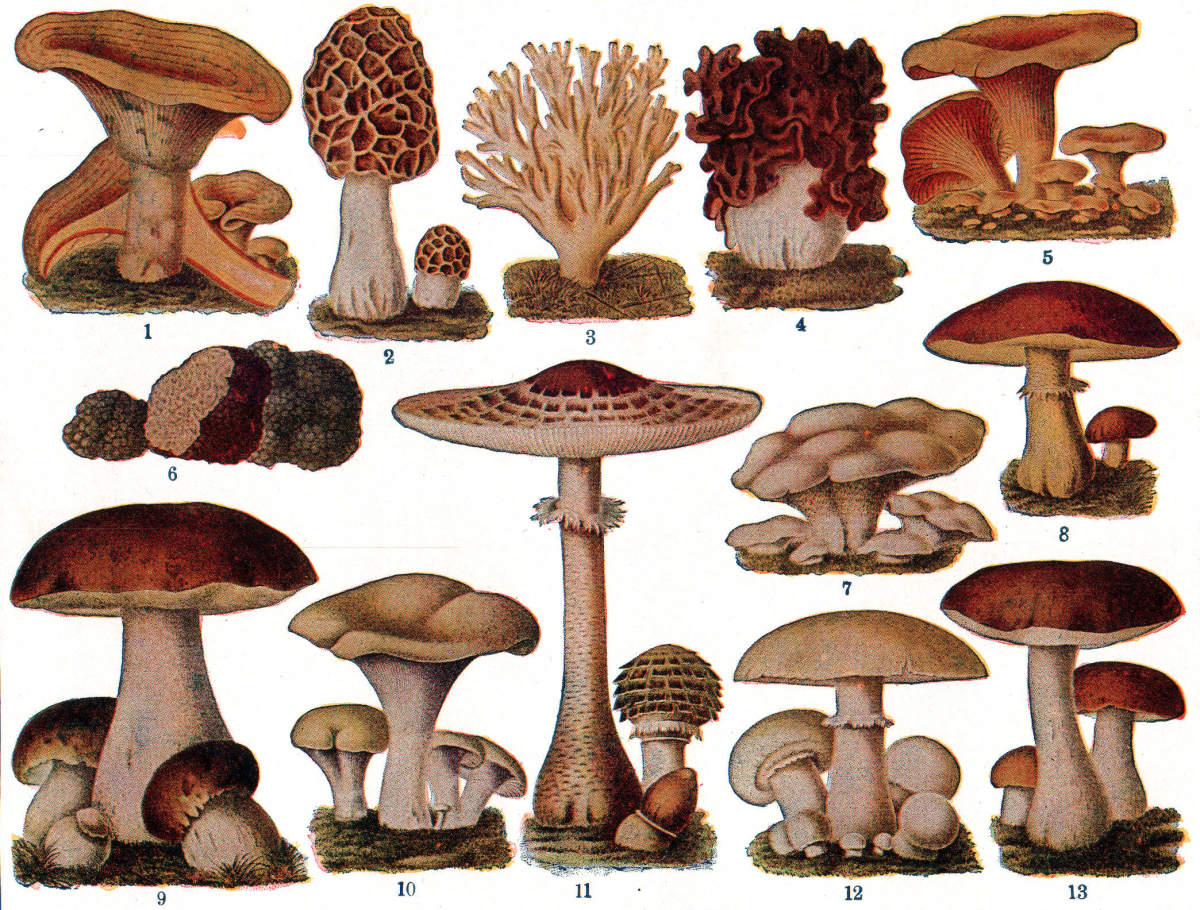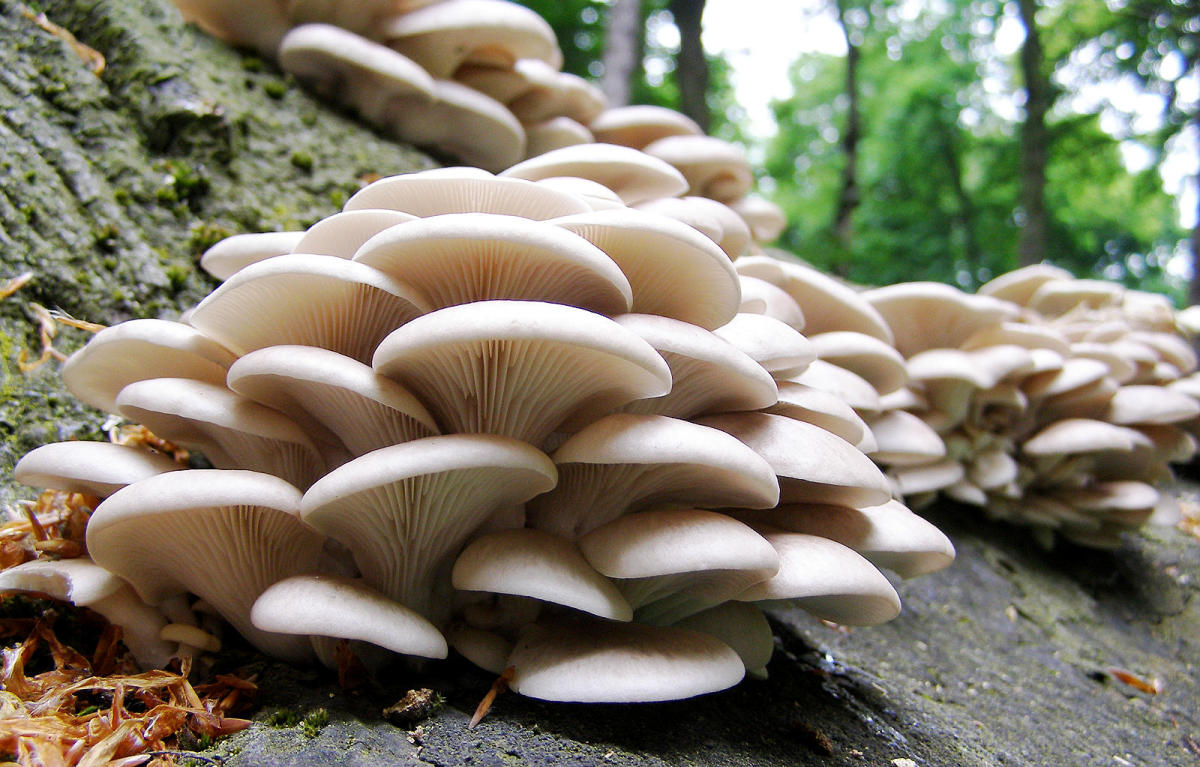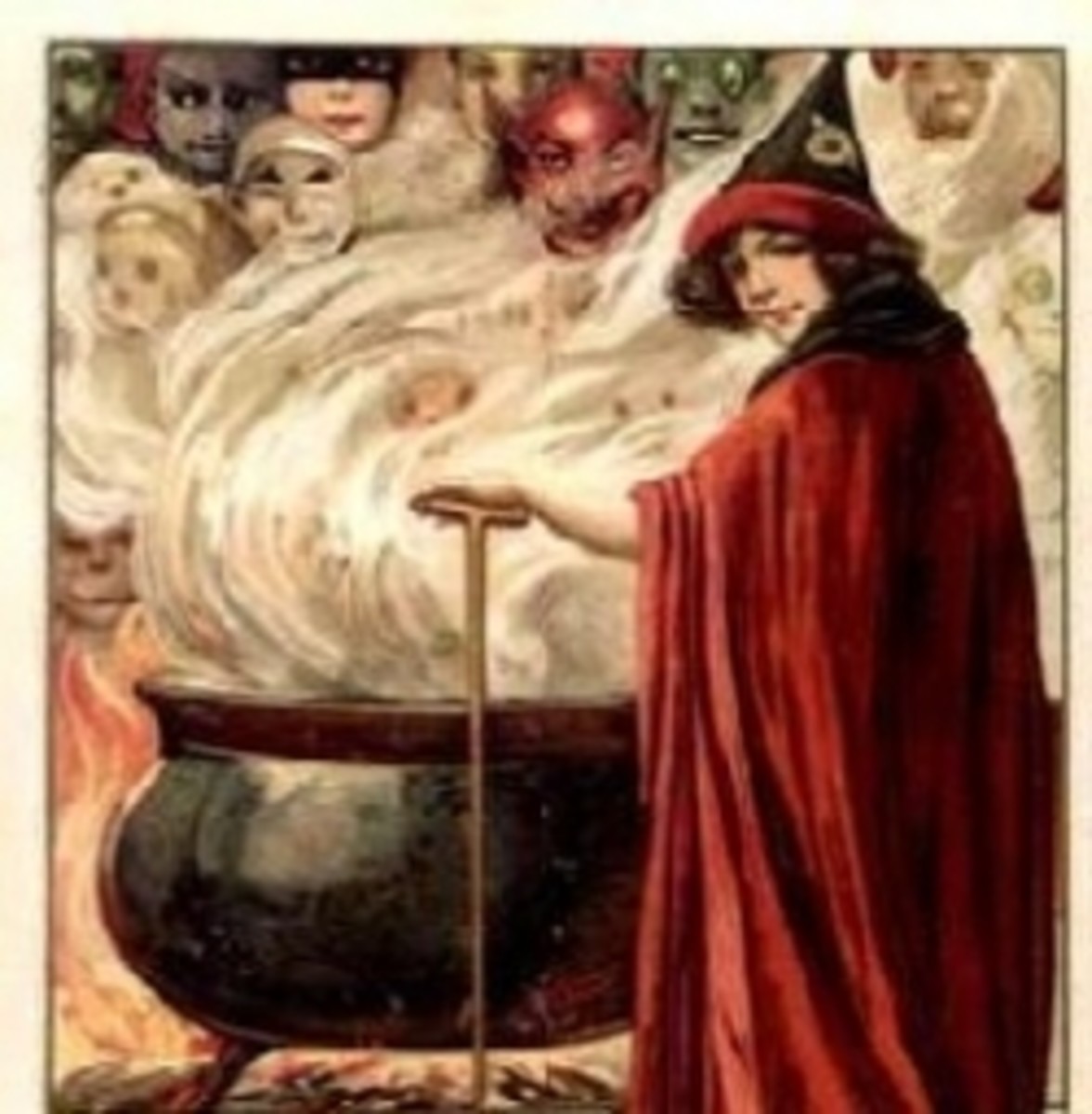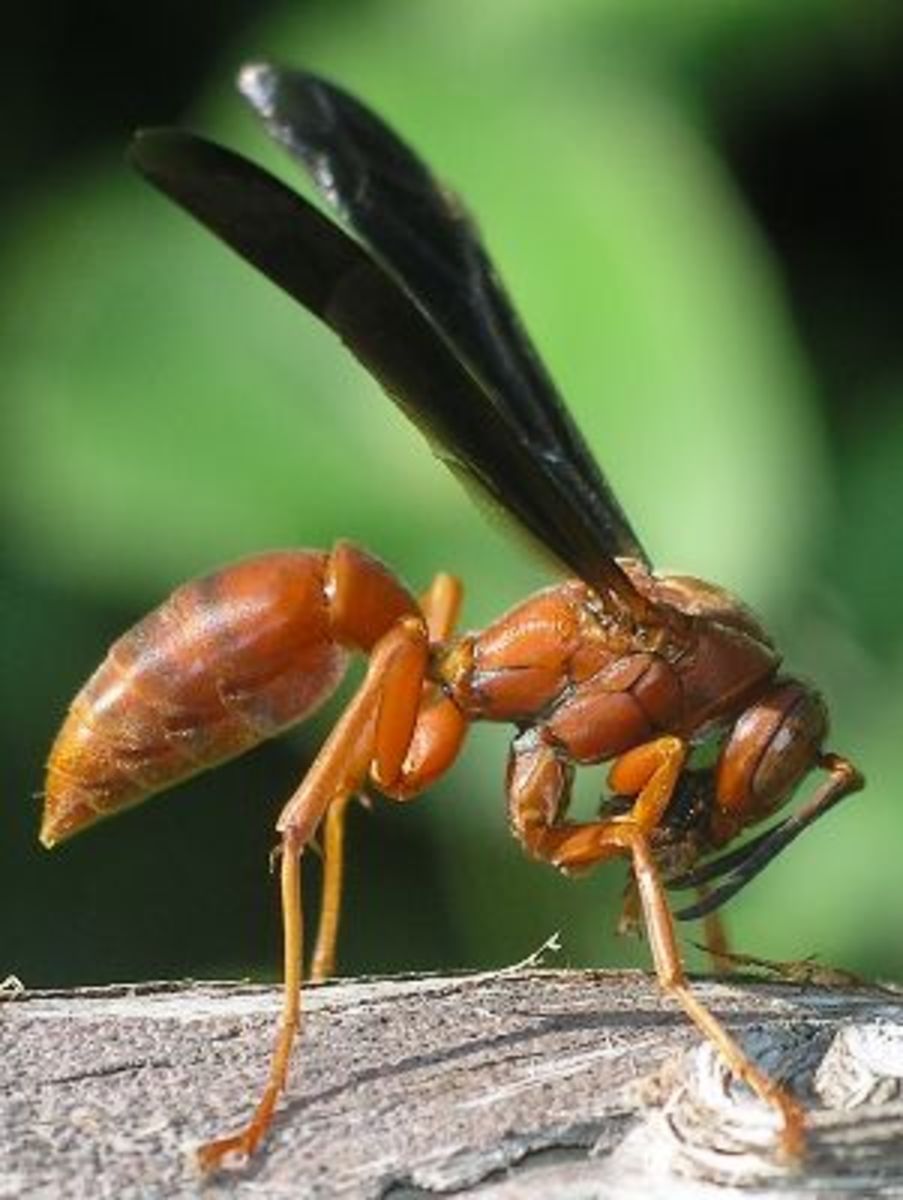Poisonous and Edible Fungi (Part 2).
All photos show edible fungi, but careful!!
Click thumbnail to view full-size






Similarity Makes Collecting Dangerous
Edible Fungi (Part 2).
If you read my early hub article about mushrooms and toadstools, you will have found that the borders between the two are really quite fuzzy. That is, there are poisonous fungi we call mushrooms as well as harmless, edible “toadstools” we leave severely alone because of the name they have been tarred with.
What are they anyway? Mushrooms and toadstools are the “fruit bodies” of specific types of fungi. Fungi are not plants and they have two separate “kingdoms.” The mostly green plants which have chlorophyll and the huge world of the fungi which don’t, although they do share several characteristics with plants and, indeed, animals.
Fungi are neither all bad and the “excrement of the soil,” as Francis Bacon dubbed them, not all good, the “flowers of the Earth,” as some Mexican Indians styled them. Some early tribes featuring edible fungi in their diets saw them as meat rather than plant food - and some do contain “chitin,” the same substance found in the exoskeletons of many insects.
Scientists specializing in fungi are known as “mycologists” and can be found operating in large botanical gardens as well as the remote parts of the earth locating new species.
As tasty as they are, it’s a great shame an edible fungus all too often appear little different to the layman than another which is fatally poisonous. In fact, the poisonous substances in fungi such as the Amanitas is some of the most deadly known to man, (Phallotoxins and Amatoxins). These and another dozen species are wide spread and not uncommon in Britain, which is why few non-experts trust themselves to gather fungi - mushrooms - for the pot, preferring to stick to those available in the supermarket. Some overly cautious folk even prefer to eat no fungi from any source saying that it is easy for even an expert to make a mistake and who can say whether some madman has included a deadly variety in the market mushies. And it is true to say that you only need make one mistake to pay with your life. Perhaps the best way would be to grow them at home if you have the time and space.
You will have heard all or some of the following facts about fungi:
Edible fungi peels easily
While cooking, a silver spoon blackens if fungi is the poisonous variety
Salt turns yellow on the gills of poisonous fungi
Species eaten by animals is safe
If it smells nice, it’s OK
Bright colored fungi are poisonous
Fungi that change color while preparing are poisonous
Fungi that exude a milky sap are poisonous
Cooking or drying destroys any poison
Grassland fungi are all edible.
Not ONE of these gems of folklore can be relied upon and should not be believed, although some of the “rules” are true for SOME of the fungi. But there are many people lying in early graves all over the world who were guided - or misguided - by these so called facts.
As most of the problems with identifying edible fungi occurs in woodland species - but not all - the focus in this article will be on edible mushrooms found in open, grassland areas. And the poisonous ones found there will get a mention, too.
Before you actually go mushrooming, unless you go with an expert, you will need to buy a good guide book on the subject. I recommend “How to Identify Edible Mushrooms,“ a Collins guide by Richard Harding, Tony Lyon and Gill Tomblin. Obviously, providing you with enough information, graphics and pictures to keep you safe is beyond the scope of a hub article.
First, the ones to stay away from. There are actually about the same number of poisonous fungi as there are edible, so you need to take care.
To avoid. Common Ink Cap, Ergot, Livid Entoloma, Red-staining Inocybe, Yellow-staining Mushrooms, Liberty Cap (also called Magic Mushroom), Ivory Clitocybe (also called Sweating Mushroom), Stinking Parasol.
Common Ink Cap might easily be used as Antabuse, the chemical used to cure alcoholics by making them ill if they drink. Ink Cap has the same effect of its poison combining with any alcohol in the blood stream and causing vomiting, etc. Can be eaten by teetotalers!
Ergot. This is the infamous fungus that is parasitic on grass including cereals, especially Rye and caused many deaths in France before being identified. You are not likely to come across it with any intention of gathering it for the pot.
Livid Entoloma. This IS the main poisonous grassland fungi to identify and stay away from as it is rarely fatal, but causes about 80% of all fungi poisoning in France. It can also be confused with several of the edible species
Red-staining Inocybe. One of the nastier fungi as regards poisonous effect from its toxic amount of muscarine. Can kill you.
Yellow-staining Mushroom. Not common but easily mistaken for edible Horse or Field Mushrooms. Not usually lethal, but with nasty short-term effects.
Liberty Cap or Magic Mushroom. Contains a hallucinogenic (psilocin) and can have effects like LSD. It is illegal to prepare drugs from the mushroom, but it can be eaten. Careful with after effects from strong drug. Very common after heavy rain.
Ivory Clitocybe. Easily confused with edible fungi but very toxic and can induce heavy sweating causing weight loss of up to 8 kilos!
Stinking Parasol. Not especially deadly, but some of this family are lethal so stay away as the ones that smell less bad are actually more lethal.
Edible Fungi. I have added pictures where possible for these. Field Mushroom, Horse Mushroom, St George Mushroom, Shaggy Ink Cap (Lawyer’s Wig), Weeping Widow, Parasol Mushroom, Meadow Waxcap, Field Blewitt (Blue Leg), Fairy Ring Champignon, Giant Puffball, Smaller Grassland Puffball. Note: None of the above edible mushrooms stand alone as being clear cut edible fungi, except the puffballs whose size makes them impossible to confuse with any other fungi, except a few members of the same family, some less edible, but none of which are lethal. They should be eaten while immature and can be baked whole if you have a large oven. Incredible fungi, shame they are not more wide spread.
The other edible mushrooms nearly all have several which look alike and can make you ill or worse. To be really honest, I won’t be going mushrooming any time soon, with or without an expert. No matter how good your guide is, the fungi in the field never look quite like the illustration. It’s just too easy to be fooled and to end up needing an emergency liver transplant. I do occasionally buy button mushies in Tesco to fry with the bacon, but the rest will remain largely unmolested by moi…
Do remember we have only discussed fungi growing in open grasslands, there are many, many more which confine themselves to broad leafed and pine forests and are even harder to correctly label. I have also not mentioned truffles as they are rare away from scrub oak forests and the wild pigs of Spain and France which eat them, thereby propagating the spores..

